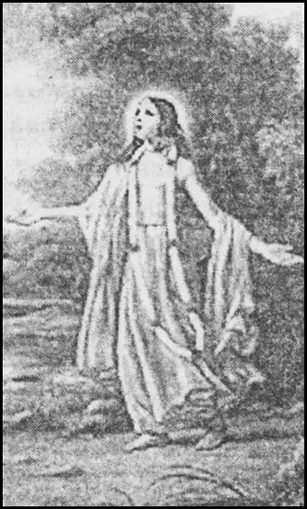Choose any two of the religious teachers/thinkers/saints mentioned in this chapter, and find out more about their lives and teachings. Prepare a report
about the area and the times in which they lived their major ideas, how we know about them, and why you think they are important.
1. Namadeva : Great saint of Maharashtra Namadeva was also one of the prominent leaders of Bhakti movement. He was a poet of high class.
Life of Namadeva : Namadeva was bom at a place named Pandharpur in Maharashtra on 29 October, 1270 AD. His mother’s name was Gonai and father’s name was Dana Seth. His father was a tailor by profession. His parents were devotees of Bitthal Swami. He, therefore, also became a staunch devotee of Bitthal Swami. Namadeva was married to a girl named Rajbai. He was blessed with four sons and a daughter.
Namadeva made a famous saint named Bisoba Khechar as his teacher (guru). It was only due to his favour that Namadeva became a great saint. He has sung the praise of his guru in his songs (abhangas). Namadeva had great regard for Gyaneshwar, a famous saint of Maharashtra. With him, he toured almost the whole of the country. After the death of saint Gyaneshwar, Namadeva stayed in Punjab and preached among the people making Gurdaspur as his centre for preaching.
During the last days of his life, Namadeva had returned to Pandharpur. It was here that he died in 1350 AD at the age of 80 years.
Teachings of Namadeva :
1. God is one. He is all powerful and omnipresent. In his own words, “God exists in this world, God is in the next world, there is no part of the world, where God is not present.
2. Everyone should be dedicated to God. Namadeva believed that devotion to God is the true support of life. Life is useless without it.
3. Caste and outwardly rituals are useless. In the words of Namadeva,“Cows are of different complexions, but their milk is of the same colour. How you are brahmin and we are shudras!”
4. Human life is mortal. Namadeva’s saying was-a bird sits on a tree and then fly away. Similarly, a man comes in the world and goes away.
2. Chaitanya : Chaitanya Mahaprabhu, the person imitating the whole Bengal and northern India with Bhakti, was a great saint of Medieval India. He propagated Krishna Bhakti in the whole of northern India. He was born at a place named Nadia in West Bengal in 1486 AD. Vishambar was his childhood name. His father’s name was Jagan Nath Misra and Shanchi Devi was his mother.
V i s h ambhar received education in a Sanskrit school. After that, he opened a pathshala. Attracted towards his intellect and knowledge, the students joined his pathshala. Vishambhar wanted to be away from worldly bondage. But, on the insistence of his parents, he had to marry twice. But still he was not involved in worldly bondage.

Chaitanya
When he went to Gaya at the age of 22 years for performing shradha of his mother, he met there Mahatma Ishwar Puri who told him to secret of Krishna Bhakti. Now Vishambhar forgot everything being last in Krishna Bhakti. At the age of 25 years, he was initiated into the Krishna cult by a recluse named Bhakti and renounced the world. Now he was called Krishna Chaitanya.
Chaitanya visits to different parts of India. In southern India, he went to Puri, Shringeri and Pandharpur etc. holy places. After it passing through Kashi, Prayag and Mathura, he reached Brindaban.
After it, he went to Puri and kept propagating for the religion there. Here he died in 1533 AD.
Teachings: Chaitanya was a great reformer of Bhakti movement. He stressed upon devotion more than knowledge. He condemned caste-restrictions and the distinction of high and low. All are equal in his eyes. His statement was that there is no place for caste distinctions in devotion to Krishna. While sending his two disciples to Bengal for propagating Krishna Bhakti, Mahaprabhu Chaitanya had instructed them, “Preach Krishna-Bhakti even among Chandals and teach the lesson of devotion and love to all human beings without partiality,” thus, for Chaitanya, the Hindus, the Muslims, Brahmanas and Shudras-all were equal. The people of all communities, therefore, became his disciples. His most beloved disciple,Haridas,was a Muslim in the beginning. Chaitanya taught his pupils to avoid contact with women. His saying was that one should not sit in isolation even with mother, sister and daughter.





